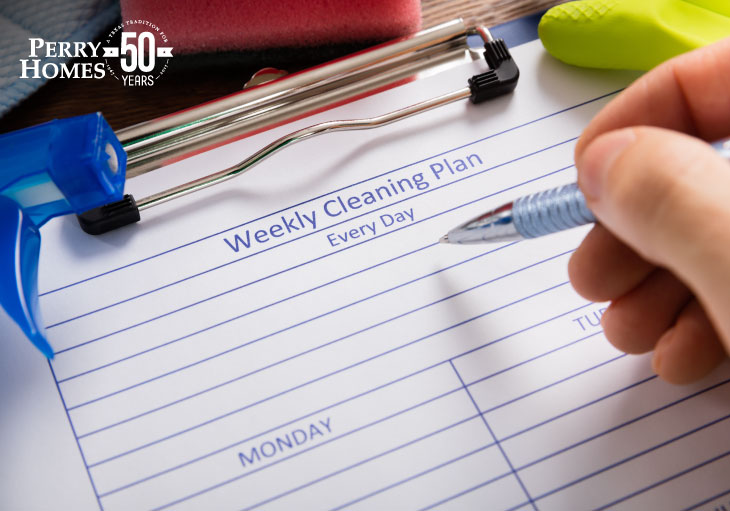
9 Steps To A (Mostly) Allergy-Free Home
You can run but you cannot hide from seasonal allergies. It is an unfortunate reality: no matter what time of year, allergy symptoms will affect all of us at some point, even indoors. You cannot always outrun seasonal allergies, even indoors. Imagine, for a second, if the dinosaurs in Jurassic Park were replaced with allergens. Then that one classic quote becomes, "[Allergens] find a way."
You do not have to sit idle, though. There are ways you can defend your home from allergens and avoid becoming another allergy statistic. With a little discipline and, in some cases, financial investment, your home can be the sanctuary from mold, pollen, pet dander and dust you deserve.
Keep windows and doors closed
Sounds simple, right? But you will be surprised just how difficult this can be during nice weather, when that perfect breeze is blowing and it is not too hot or too cold. Instead, make it a house rule that windows and doors should remain closed at all times. Especially in places where air conditioning is a necessity, keeping everything shut tight can help regulate and maintain indoor temperatures.
No smoking
No one should be smoking for health reasons, anyway. But you should especially smoking inside your home. The fumes will get trapped in furniture, clothing and hair, causing lingering smells and particles that cause respiratory distress for those with allergies and asthma.
Did we mention it is also bad for your health?
Wash your hair and change your clothes
Allergens can travel in many ways, one which is jumping a ride on your hair or clothing. So start getting in the habit of a quick rinse and throwing on your favorite loungewear.
Who knows? Perhaps adding this to your routine may have psychological benefits, in that you can better distance yourself from the workplace by literally and figuratively shedding yourself of potential stressors that prevent you from achieving true relaxation.

Keep a dedicated cleaning schedule
No one likes chores, but when it comes to managing allergy symptoms, keeping things tidy can make a real difference. The most common culprits are dust mites and pet dander. By regularly dusting and vacuuming, you will prevent these buggers from spreading inside your home as well as joining your morning commute to work.
Along removing dust mites, you will also naturally trap food particles that may attract cockroaches or other pests that may be looking for a feast. Roaches, while common, are a particular concern for allergy sufferers because their droppings contain proteins that can trigger symptoms, much like dust mites.
Invest in multiple air purifiers
Having multiple air purifiers, especially ones with HEPA filters, helps filter out harmful air particulates, whether that is mold, pollen or other harmful allergens.
Be strategic about your placement. Focus your attention on more trafficked areas like living rooms and bedrooms.
Keep an eye out for mold
Mold likes to grow in temperatures between 60 and 80 degrees Fahrenheit, which is what most humans prefer as well. Plus, mold prefers darker, moist environments to grow as opposed to well-lit areas, where the sun exposure increases the temperature. That being the case, prime targets are underneath sinks and cabinets and interior bathrooms without windows. When cleaning, pay extra attention in those areas, or even clean multiple times during the week.
Some homeowners even opt for dehumidifiers, which remove moisture from the air, although these are more common in homes with basements.
Maintain pet barriers and grooming routines
You love your pet. You want them to be happy. But reality says they are great sources for dander. Rather than limit yourself to hypoallergenic breeds–which, by the way, are not 100 percent allergen free–simply keep up with animals you have.
Practice regular, if not daily, grooming to cut down on shedding. Do not worry if your pet is initially resistant, as most will get used to it over time.
The next part is harder. As much as you can, keep pets off of furniture and beds. One way or another, that hair will wind up on you. If push comes to shove, ban your furry friends from the bedroom altogether, because allergies have no sense of time and will keep you from a good night’s sleep, or keep them outside, weather permitting.
Avoid air drying laundry
This is not a problem for many, but for those who still literally hang dry their laundry outside should stop immediately. Those laundry commercials you saw are full of lies. While that fresh outdoor scent may be enticing, placing clothes and bedding outside is only trapping allergens and inviting them inside.
Check your home’s AC filters
Last but not least, ensure your home’s air conditioning unit is operating at peak efficiency by checking its filter. Most new construction homes today come with HEPA filters that remove recycled air, but check that yours has not reached the end of its life cycle. Relying on used filters will just redistribute allergens and, depending on the age of your system, result in higher energy usage to compensate. More energy means higher bills, and no one wants that.
Keep in mind this process is not one and done. Allergens will eventually accumulate over time and require multiple run throughs throughout the year.
Are you feeling less congested already? Share this post and add suggestions of your own on social media!
